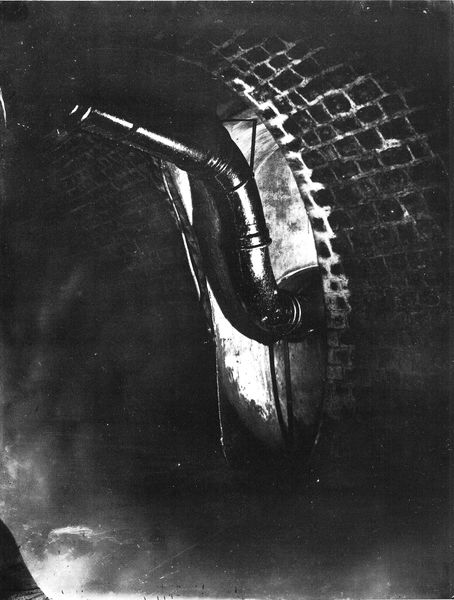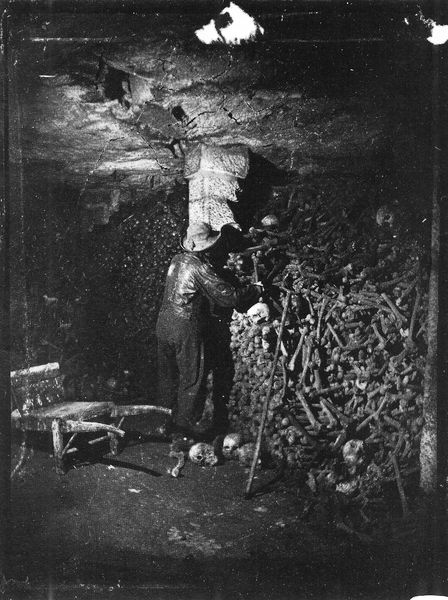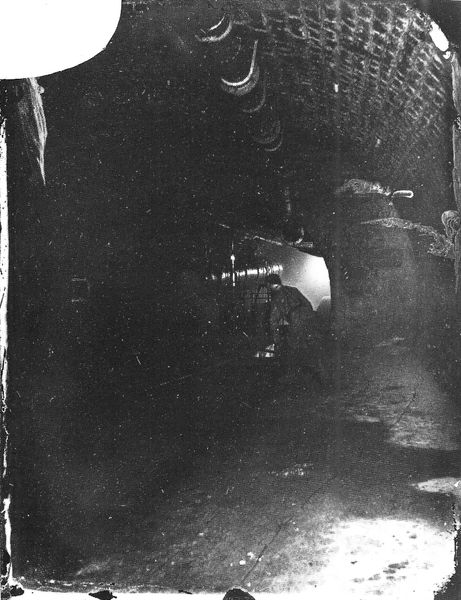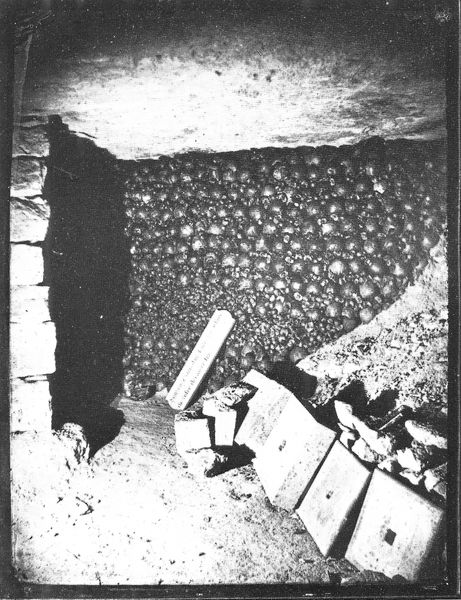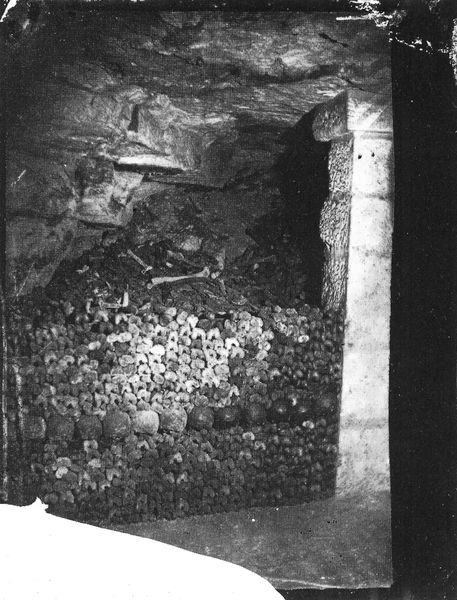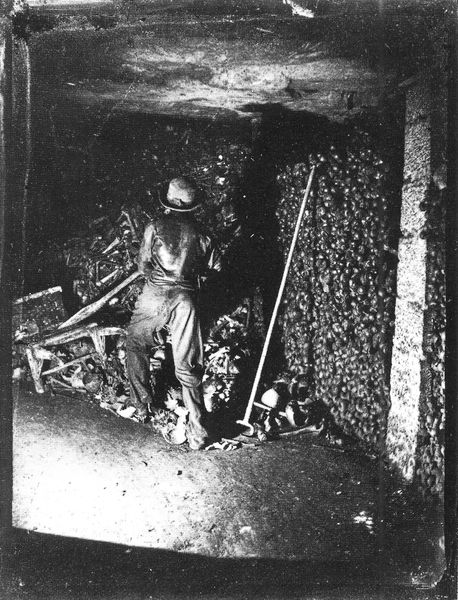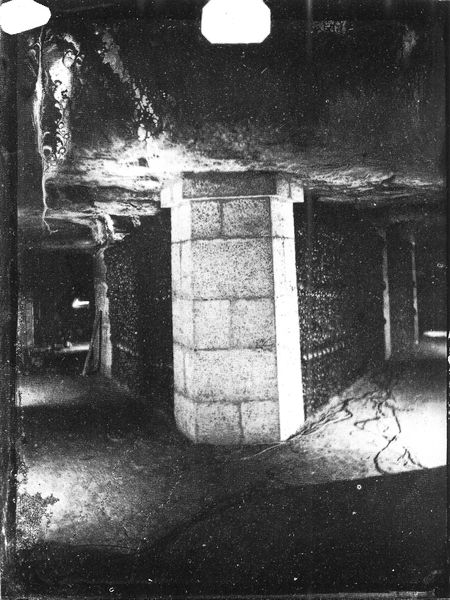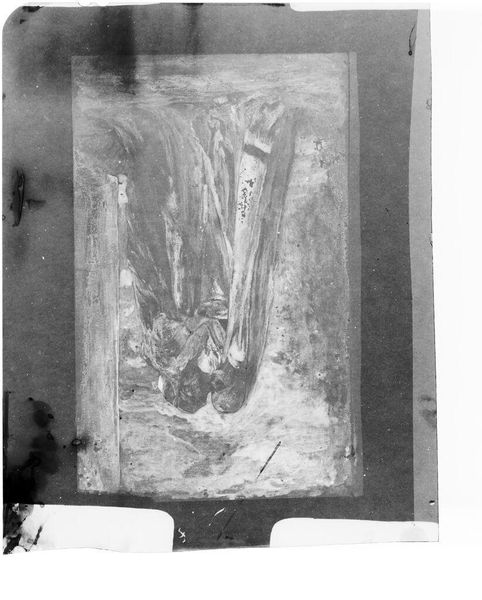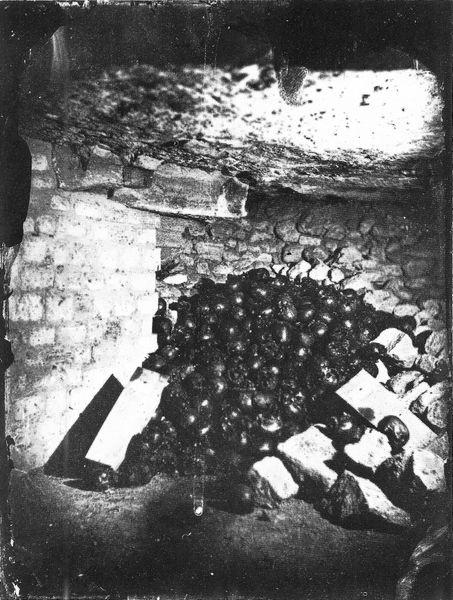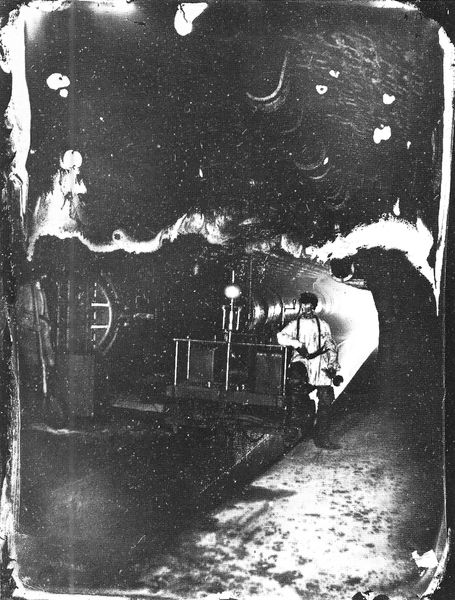
Copyright: Public domain
Curator: This gelatin-silver print is titled "Catacombes De Paris," captured by Felix Nadar in 1861. What strikes you immediately? Editor: Well, the mood is undeniably somber. It's a cavernous space, lit in such a way that throws the human remains into stark relief, highlighting their disturbing presence and fragility. The heavy use of monochrome further intensifies the macabre scene, no? Curator: Indeed. Nadar’s compositional choices are critical here. Note the dramatic play of light and shadow, a technique known as chiaroscuro. See how the bones are strategically arranged to form a rather disturbing focal point, emphasized by the dark surroundings? Editor: Absolutely, it feels as if we’re being forced to confront our own mortality, standing within the silent city of bones. The act of photographing this space can be interpreted through the context of urbanization and displacement. Consider the complex relationship between these disinterred individuals and the rapid growth of Paris. Who were they, and how did their lives intersect with broader socio-political forces? Curator: An excellent point. Focusing on its formal elements, notice the grainy texture and tonal range that Nadar achieves. It isn’t just a document; it’s a study of form and texture. How the composition leads your eye. The diagonals formed by the bone piles offer both depth and unease. Editor: But Nadar's presence down there transforms the space. The image captures an intersection of history, photography, and human existence. We must also think about labor; Nadar, though an artist, was also part of the burgeoning industry and political landscape of image-making that, by its very nature, involved complicated exchanges of power and influence. Curator: It is through Nadar's innovative use of artificial light in a subterranean environment that gives this work its significance, capturing detail previously unseen, thereby adding a level of depth to our visual and intellectual engagement with the print. Editor: A potent image about dispossession, reflecting larger issues surrounding historical erasure. Hopefully this invites people to reflect on power and privilege… Curator: While, as a photo, its complex contrasts remain impactful in their original monochromatic form.
Comments
No comments
Be the first to comment and join the conversation on the ultimate creative platform.


